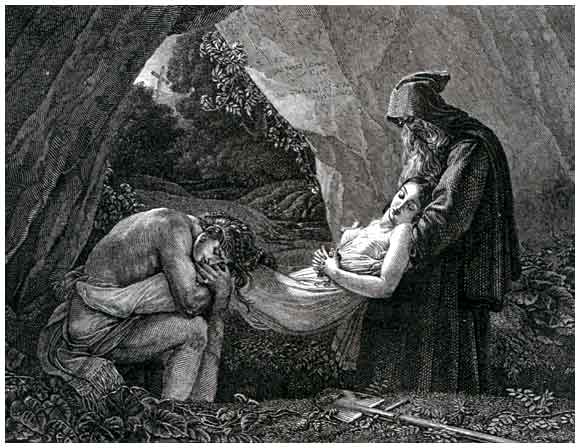 |
 |
 |
|
|

The Burial of Atala
From the picture by Girodet-Trioson.
|
...introduction continued; ANNE-LOUIS GIRODET DE ROUSSY, called
"de Trioson," from a physician by that name who adopted him
when very young, was born at Montargis in 1767, and died at Paris, in
1824. He inherited from his own family a large fortune, and this was
increased upon the death of Doctor Trioson, who left all his fortune
to his adopted son. Placed thus in a position of complete independence,
he employed his time in imagining works which he either never carried
out or which he finished only after labor, often out of all proportion
to their intrinsic importance. His principal pictures are the "Endymion
Sleeping," "Hipocrates refusing the gifts of the Persians,"
and the "Burial of Atala," the picture which we engrave, and
which the reader may like to compare with the treatment of the same
subject by a painter of our own times, G. Courtois, described upon page
101, where also the story is told upon which the picture is founded. continued... |